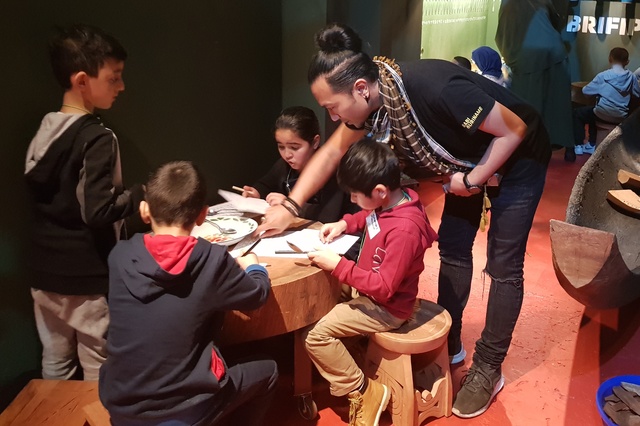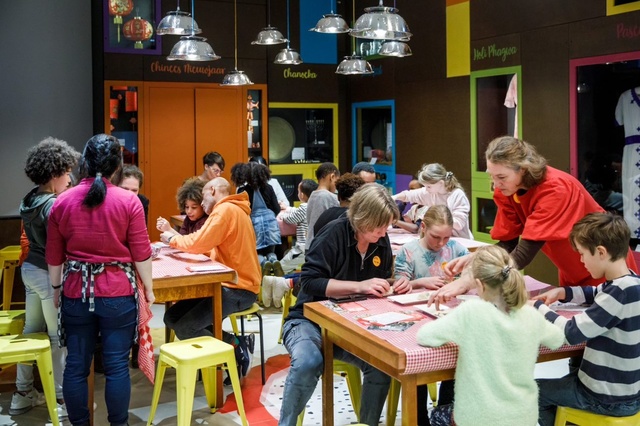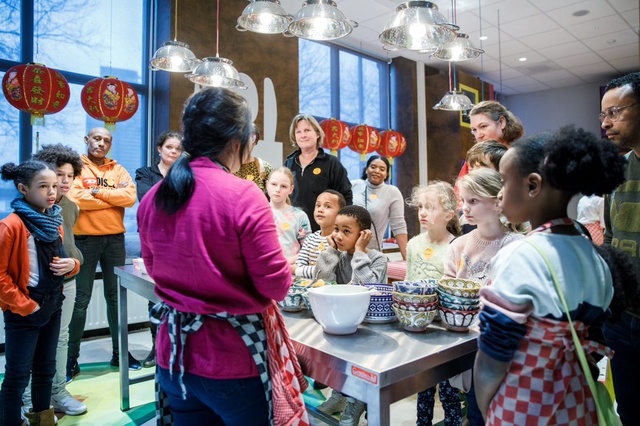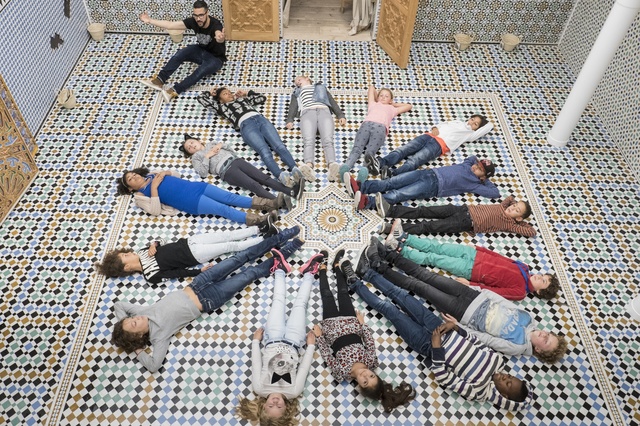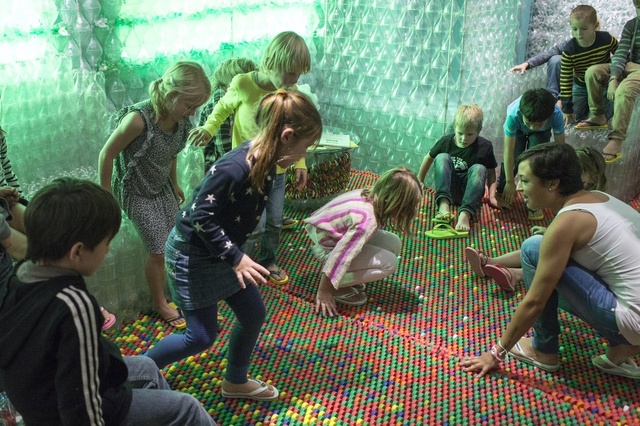
MixMax Brasil, Tropenmuseum Junior: multi-sensory environment
“I hear and I forget, I see and I remember, I do and I understand”
Cultural institutions with extensive offerings for young visitors are important places for imparting knowledge and fostering understanding. Which methods and tools can be used, and which are the right ones in the future?
“I hear and I forget, I see and I remember, I do and I understand”: This saying is often attributed to Confucius and highlights the importance of active engagement and experiential learning in the process of acquiring knowledge and understanding. The adage emphasizes that the most profound understanding comes from actively engaging in an experience or doing something ourselves.
More and more museums are incorporating hands-on activities for young visitors, to create immersive, interactive, and engaging experiences that cater to their developmental needs. These activities foster active learning, multi-sensory engagement, cognitive development, social interaction, and collaboration, making museums more accessible, educational, and enjoyable.
Children's museums have traditionally emphasized hands-on learning, and this approach is likely to continue in the future. Interactive exhibits, manipulatives, and tactile materials will still play a significant role in engaging visitors and promoting active exploration and experimentation. In the future, museums may utilize a variety of methods and tools to create engagement and educational experiences. Here are some potential methods and tools that could be prominent:
- Interactive technologies: advanced technologies like augmented reality (AR), virtual reality (VR), mixed reality (MR), and interactive projections and games can provide immersive and interactive experiences. These technologies can allow children to explore virtual environments, interact with digital objects, and engage with educational content in innovative ways.
- Sensory experiences: future museums may incorporate multi-sensory experiences to create a more immersive and memorable visit. This could involve the use of lighting, soundscapes, scents, textures, and interactive elements that engage multiple senses simultaneously.
- Accessible design: children's museums in the future may prioritize accessible design principles to ensure that all children, including those with disabilities, can fully participate and engage. This could include features like wheelchair accessibility, sensory-friendly exhibits, special needs programs, inclusive content, and alternative communication methods.
- Maker spaces: the inclusion of maker spaces within museums can encourage creativity, problem-solving, and hands-on learning. These spaces can provide tools and materials to engage in activities like building, tinkering, prototyping, and creating own projects.
- Collaborative (intergenerational) learning: future museums may promote more collaborative learning experiences, more intergenerational or family oriented than child centred. Group activities, cooperative games, and teamwork-oriented exhibits can foster communication, cooperation, and the development of social skills among generations.
- Gamification: incorporating game elements and principles can enhance children's engagement and motivation. Gamified exhibits and activities can involve challenges, rewards, and a sense of achievement, making the learning process more enjoyable and interactive.
- Personalized learning: museums may leverage technology to offer more personalized learning experiences. This could involve adaptive systems that tailor content and activities based on interests, abilities, and learning styles, allowing for a more customized and engaging experience.
- Data visualization: data visualization techniques can be used to present complex information in a visually appealing and understandable manner. Children's museums may employ more interactive data displays, infographics, and visual representations to help children grasp abstract concepts and explore data-driven topics.
- Mobile apps and devices: museums might develop several digital platforms, mobile applications, or provide devices like tablets or smartphones to enhance learning experiences. These apps or devices can offer interactive guides, digital maps, online education for schools, and multimedia content that complements the exhibits.
These methods and tools will continue to develop as technology advances and educational approaches evolve. The ultimate goal will be to provide young visitors with a meaningful and inspiring experience that supports their learning and development.
Do not focus too heavily on technology.
A children's museum should strive to strike a balance between investing in technology and providing personal guidance to visitors. Both aspects are important and contribute to a meaningful museum experience. While technology can offer valuable enhancements to a museum experience, there are reasons why we should not focus too heavily on technology:
- Children's museums should consider the developmental needs of their young visitors. Excessive reliance on technology may not align with the recommended screen time guidelines for children. Younger children may benefit more from hands-on activities and personal guidance, while older children may be more receptive to technology-based experiences. Adapting the use of technology to different age groups can ensure that it aligns with their developmental needs and interests.
- Children learn best through multi-sensory experiences and a balanced approach that includes hands-on, physical, and social experiences that support their overall development, fostering a deeper understanding. Over-reliance on technology may limit their exposure to diverse sensory experiences and reduce opportunities for physical and emotional engagement.
- Children's museums provide valuable opportunities for children to interact with their peers, engage in cooperative play, and develop social skills. Focusing too much on technology could diminish this social aspect of the museum experience, as individual screen-based activities may limit opportunities for face-to-face interaction and collaborative learning.
- Excessive reliance on technology may create barriers for certain children who do not have access to technology outside the museum, or who may not be familiar or comfortable with its use. Children's museums should strive to be inclusive and ensure that all children, regardless of their technological resources or background, can fully participate in the museum experience.
- It is important to balance authenticity and imagination. Children's museums often aim to spark imagination, creativity, and open-ended play. Hands-on activities and physical exhibits can offer more open-ended opportunities for imaginative exploration and self-directed learning. Technology, while useful, may provide more structured experiences that limit the child's own creative interpretation and expression.
- Children have different learning styles, and some may thrive more in hands-on, tactile, or kinesthetic experiences. A balanced approach that incorporates a variety of learning opportunities can cater to the diverse needs and preferences of children, ensuring that every child can engage and learn in a way that resonates with them.
The most interactive medium of museums are human beings. Personal guidance plays a vital role in supporting learning and engagement. Through activities and dialogue, museum staff can ensure children make personal connections to their own life. They stimulate active participation and give individualized attention. They offer dialogue, reflection, and provide explanations tailored to every interest and ability. This social interaction sparks curiosity, deepens understanding, and fosters a connection between the child and the museum, much more than technology can.
In conclusion, while technology can enhance the museum experience, it is important to strike a balance. By providing a mix of hands-on activities, social interaction, and diverse learning opportunities, we can create inclusive, developmentally appropriate, and engaging experiences that foster holistic learning. Even without technology.
Credits und Zusatzinfos:
Credits
All photos: Wereldmuseum
Permanent Link www.doi.org/10.58865/13.14/234/6
Zitat:
Mariëlle Pals: “I hear and I forget, I see and I remember, I do and I understand”, in: neues museum 23/4, www.doi.org/10.58865/13.14/234/6.
Credits
All photos: Wereldmuseum
Permanent Link www.doi.org/10.58865/13.14/234/6
Zitat:
Mariëlle Pals: “I hear and I forget, I see and I remember, I do and I understand”, in: neues museum 23/4, www.doi.org/10.58865/13.14/234/6.
